Ken Zen Ichii Karate
STANCES
Note: Ken Zen Ichii stances differ slightly from the stances of the mother system (Wado-Ryu).
Click on the Navigation Tabs above to view more aspects of Practice
STANCES are the groundwork for all future development. Without a good stance all movements of defense or counterattack will be weak if not altogether useless. Although all styles of Karate use basic stances they are not all the same. In KenZenIchii Karate the stances are a little more formal or square. The body is part of the stance and is square at the shoulders and hips.
Formal Stance
The FORMAL STANCE (Heisoku Dachi) is an attention stance that will help teach discipline to the student. In this stance the feet are together and the body is at attention. Unlike in other Karate styles where the hands are at your side, in KZI the hands are placed on the angle line formed by the legs as they meet the body. This stance is used primarily for beginning and ending the start of class or a form but is also used when instructions are passed on to the class.
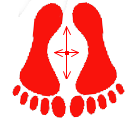
Formal Stance
Ready Stance
The INFORMAL STANCE or READY STANCE (Hachiji Dachi) is both a relaxed and ready stance. Though the body is kept relaxed, the mind is at ready for any situation that might present itself. Here the feet are shoulder distance apart and you are ready to move if need be. The hands now have been formed into a fist and are again on the line where the legs meet the body.
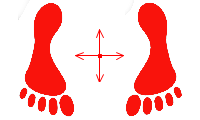
Ready Stance
Forward Stance
The FORWARD STANCE (Zenkutsu Dachi) is at balance from all directions at the same time. The key to this stance is the ability of the legs to withstand pressure from all sides. This is a balanced stance with the weight lowered to the legs. The front leg is bent at the knee with the foot turned in. The back leg is straight with the foot pointed straightforward. The body is square at the shoulders and hips and the hands are held out in front at ready.
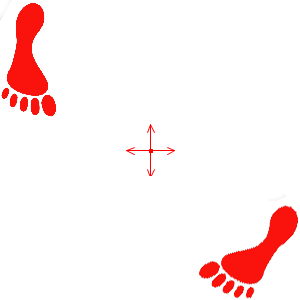
Forward Stance
T Stance
The T-STANCE (Teiji Dachi) puts you in both a solid and moveable position. If necessary, you can move forwards, backwards, or to the sides. The back foot is pointed across from the front foot, which is straight forward. Both knees are bent and the body weight is centered. The body is at a 45 degree angle to the front foot and the hips and shoulders are squared and the hands are in front at ready.

T- Stance
Back Stance
The BACK STANCE (Kokutsu Dachi) is like the T- Stance except that the heels of the back foot and the front foot are in a straight line. The knees are bent and the body weight is centered between both feet. The body is at a 45 degree angle to the front foot and the shoulders and hips are squared and the hands are at ready.
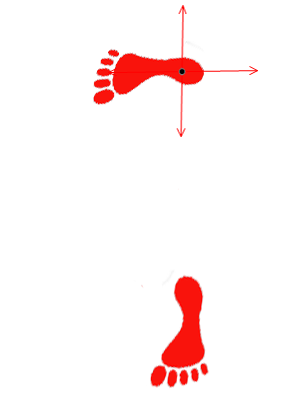
Back Stance
Cat Stance
The CAT STANCE (Neko Ashi Dachi) , literally Cat Foot Stance, is the most versatile of the basic stances. It allows movement to the front, back, or sides but also makes it possible to punch, block, kick, or turn in any of the directions that may be necessary without loss of balance or mobility. As in a T-Stance the back foot is across from the front foot with the ball of the front foot rested gently on the floor. The back leg is bent and carries 90% of the weight. The body is at a 45 degree angle to the front foot and the shoulders and hips are squared and the hands are at ready.
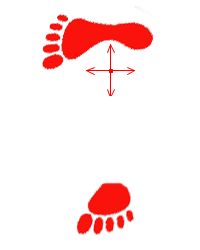
Cat Stance
Straddle Stance
The STRADDLE STANCE (Kiba Dachi), also calle Horse Stance by many styles, gives a solid defense against attacks from the sides while allowing you to move from side to side. It also teaches how to move in places where a person might find themselves backed against a wall or building. It is used primarily to practice punches and blocks in place. In this stance the feet are twice the width of the shoulders with the knees bent and the legs pushing to the outsides. The body is slightly squatted with the back held straight up and square from the hips through the shoulders. Hands are in front at ready.
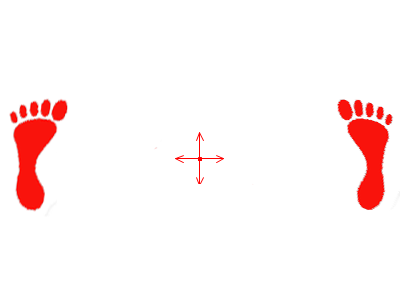
Straddle Stance
San Chin
The HOURGLASS STANCE (Sanchin Dachi) is, when applied correctly, provides a solid position for the use of the upper part of the body. Designed to anchor the bodies in place, both the front and back foot are pointed 45 degrees into center. The knees are bent, with the body weight lowered straight down. The body is slightly squatted with the back held straight up and square from the hips through the shoulders. Hands are in front at ready.
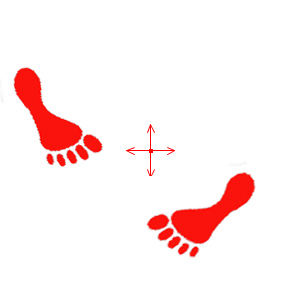
Hourglass Stance
When used within their proper limits, these stances serve to keep the body in balance in any situation.
